by Rachel Marsden
translated by Peng Zuqiang 彭祖强
From October 2012 to April 2014, I worked as Research Curator for the Centre for Chinese Contemporary Art (CFCCA), Manchester, the venue and main organizer of “Harmonious Society”. As a witness to developing relationships between the curators, artists and venue, and the varied understandings these entailed, the task of conducting an interview wavered between the view of an insider—institutional and academic—and an outsider—a viewer with a perspective only on the curatorial strategies at play. Should I try to avoid the bias of knowing almost too much, or focus on taking a step back to critique “Harmonious Society” as part of the wider Asia Triennial festival?
Rachel Marsden: For this group exhibition, you re-define the usual and literal understanding of “Harmonious Society”, “hexie shehui”, as “tianxia wushi,” meaning “nothing (has happened) under the heavens.” Can you talk about how you arrived at this theme? Also, how does it fit with the Asia Triennial theme of “Conflict and Compassion”?
Jiehong Jiang: “Harmonious Society” comes from the ideals of Hu Jintao, the former Communist Party leader of China. It became an automatic theme to respond to the ATM14’s theme of “Conflict and Compassion”. When we had the title in English—”Harmonious Society”—we thought about how to translate it into Chinese. On one hand, it was for the Chinese audiences, on the other, for the artists to have something to interpret and respond to.
RM: When set in the context of the ATM14’s thematic of “Conflict and Compassion”, do you not feel that audiences will automatically think of the censorship and societal control that China is often pre-defined by?
JJ: Yes, this is a very obvious title; it is very political and critical in a way, yet it has very little to do with visual creativity. I think “Harmonious Society” has to fit into that framework; but we are also trying to be slightly different and stand aside from direct political criticism. The idea of “Harmonious Society”, although it comes from a political statement or proposition is, in a way, very neutral and philosophical.
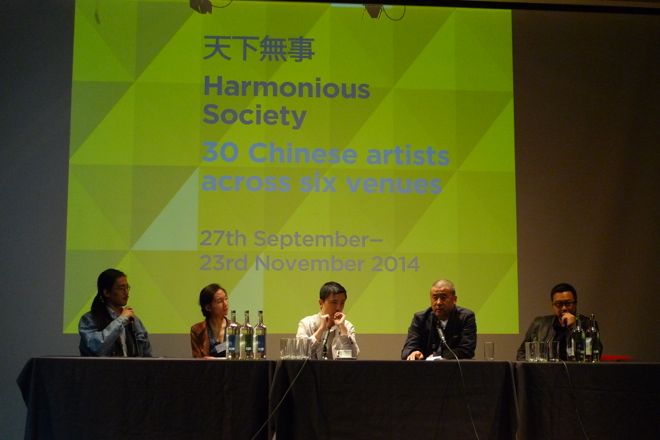
Harmonious Society Conference 29 September 2014 at MediaCity Salford – Rachel Marsden
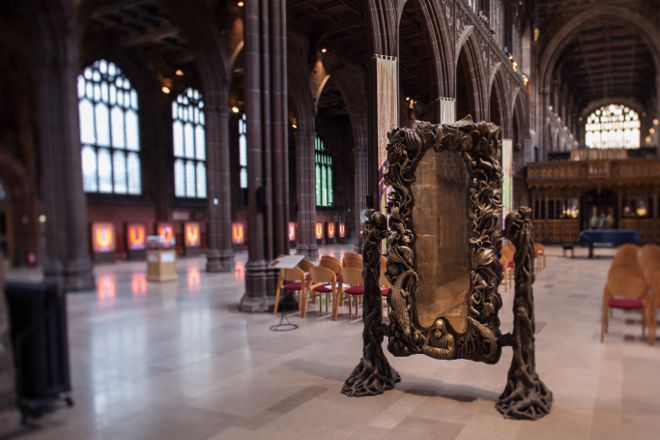
Li Wei ‘A Decorative Thing’ (2014) at Manchester Cathedral – Tristan Poyser
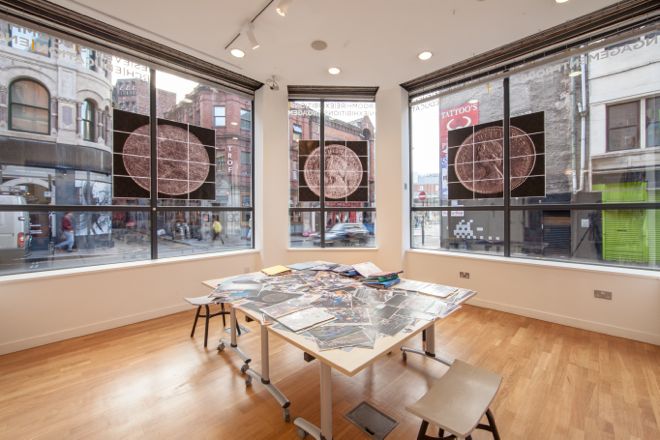
Pak Sheung Chuen ‘Resenting Hong Kong Series’ (2014) – Tristan Poyser
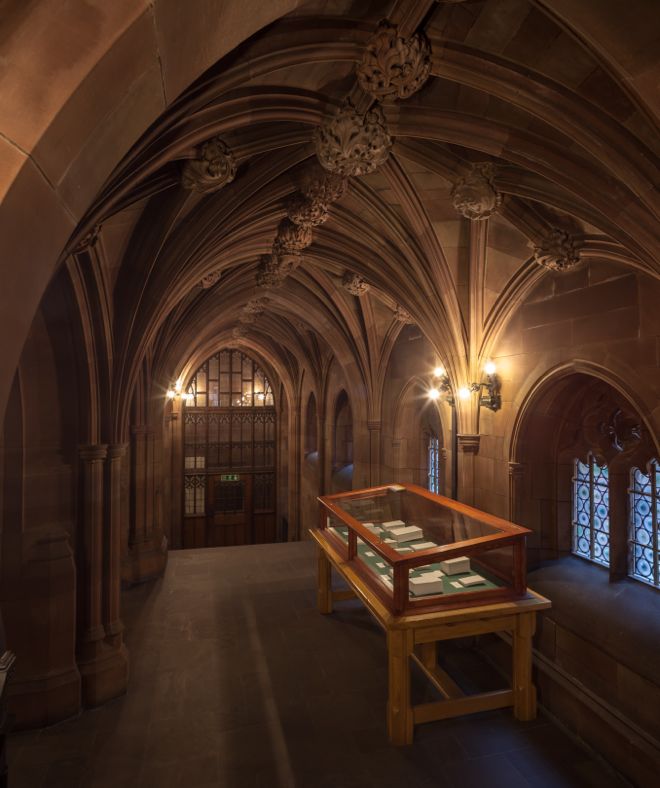
Annie Lai Kuen Wan ‘Lost in Biliterate and Trilingual’ (2014) at John Rylands Library – Tristan Poyser
RM: What was the curatorial strategy behind the use of multiple curators and venues?
JJ: There were six venues. Originally, we only had one —the CFCCA—then I asked for more. The curatorial workshops we ran during the lead up to the exhibition discussed the artists and introduced the venues and the historical, cultural and physical connotations of the spaces; then, the artists sent in proposals. Eventually, it was the proposals that chose the venues, not the venues choosing the artists. What the audience doesn’t see is that many artists were rejected from the exhibition. Originally, it was suggested that the Taiwanese artists be shown within one venue, like a pavilion, to raise the visibility of Taiwanese art. In the end, Taiwanese artists were included across different venues, which is a demonstration of the “harmony” of the show.
The artists were challenged to make work in response to three things—the theme itself of “Harmonious Society” and of the ATM14, “Conflict and Compassion”; second was to respond spatially and architecturally to the venues as some are gothic and very decorative, making it a challenge to display visually, or to make art “work” within those spaces; the third is to respond to the historical, cultural and religious contexts of the space. It was these three things altogether.
A core interest in this curatorial strategy concerns difference, rather than identity; the show connects different regions and encourages the artists to create conflicts and challenges through their responses to the idea of “Harmonious Society”.
RM: Was it to be more of a survey exhibition, a commentary on the state of contemporary Chinese art today, or a more critical examination?
JJ: It is not a survey exhibition. There are too many kinds of these exhibitions in the West. Survey exhibitions were very important around twenty years ago, but not now. The West saw very little contemporary Chinese art, so the “survey” show gave an informative introduction. Today, I feel the Western audience is much better equipped to deal with artistic responses from China. This exhibition is a collection of responses and reflections on specific issues in contemporary China. It is a project to attract artists to develop new work and to discuss certain, rather than for “good” artists to show Chinese art to the West.
RM: Do you feel there are Chinese artists who have contributed to the marginalization of contemporary Chinese art outside China?
JJ: It is interesting that you point out the marginalization of Chinese art in the international arena. In “Harmonious Society”, you can see some established artists and some emerging artists. You can’t possibly see any “Chineseness” within their work. This is because they have become more confident through having worked in global biennials and triennials and as part of this universal artistic power, rather than flagging up any Chinese element or images to attract Western curiosity.
RM: Some works, such as those in the John Rylands Library and Manchester Cathedral, can be seen as decorative, and thus exterior to the curatorial strategy for “Harmonious Society”. Was this intentional?
JJ: I wouldn’t say this was either decorative or critical. We don’t have a choice. It is about how the audience views them through the spaces. Art and space are one single unity: inseparable. If the artworks specifically developed for the cathedral are shown elsewhere, they lose their significance straight awayin terms of site-specificity. This is the marriage between art and space.
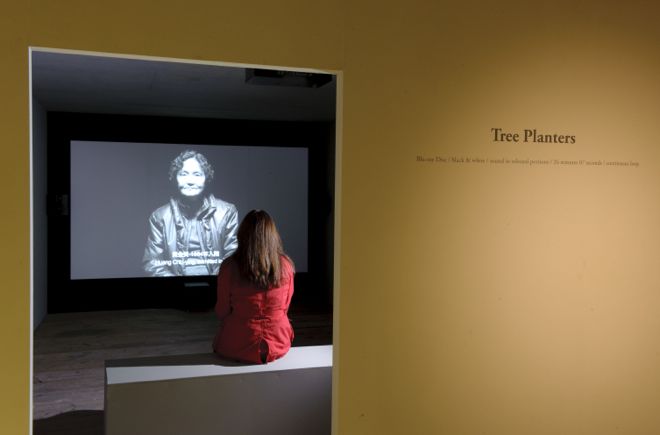
Chen Chieh-jen ‘Realm of Reverberations’ (2014) – Joel Chester Fildes
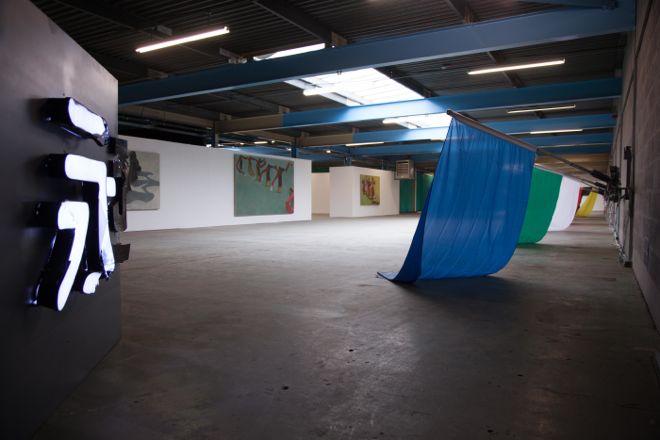
He An ‘It is Forever Not’ (2014) (L) and Zhang Peili ‘Elegant Semicircles’ (2014) (R) at ArtWork – Tristan Poyser

Liu Jianhua’s ‘Boxing Time’ (2002) and TOF Group’s ‘An Ideal Field for the Perfect Battle’ (2014) at National Football Museum – Tristan Poyser
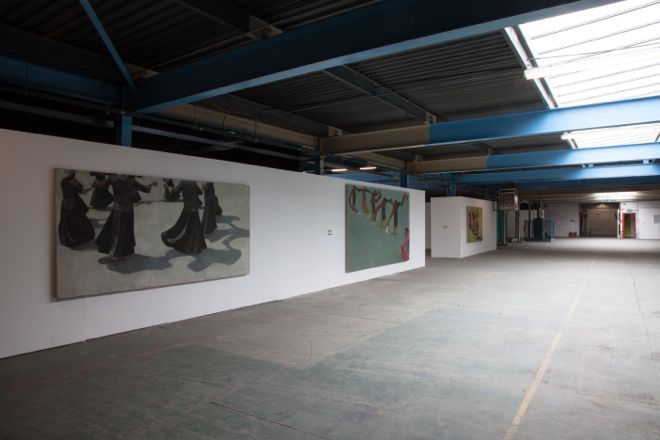
Wang Yin ‘Bouyei Dances ii’ (2013) and ‘Tibetan Dances ii’ (2013) – Tristan Poyser
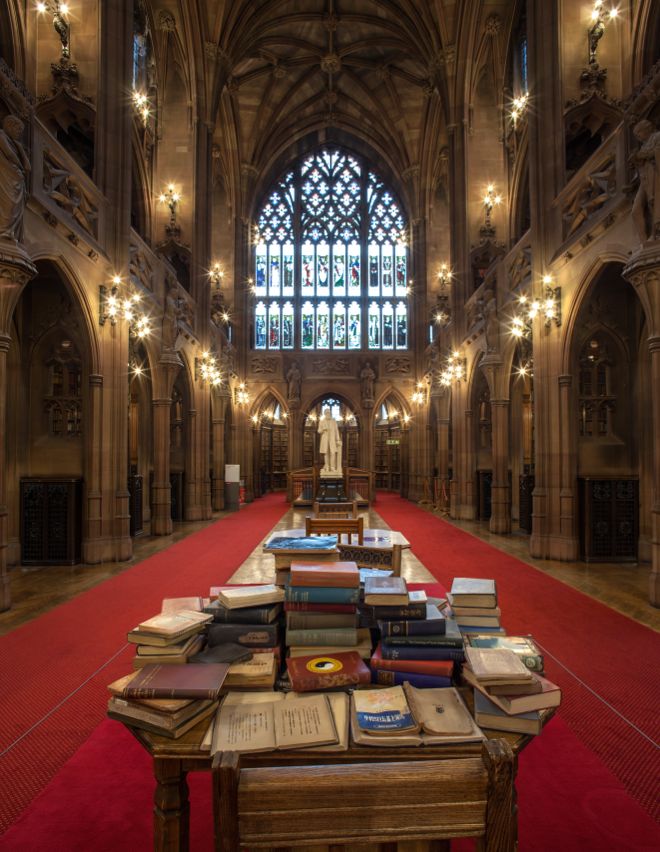
Wang Yuyang ‘Breathing Books’ (2014) at John Rylands Library – Tristan Poyser
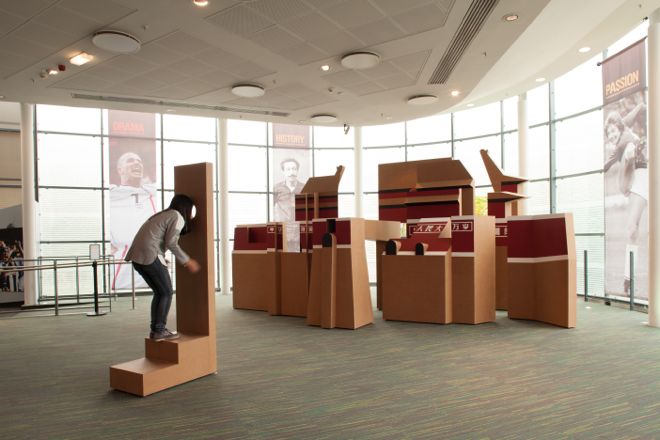
Yang Zhenzhong ‘Long Live the Great Union’ (2013) – Tristan Poyser
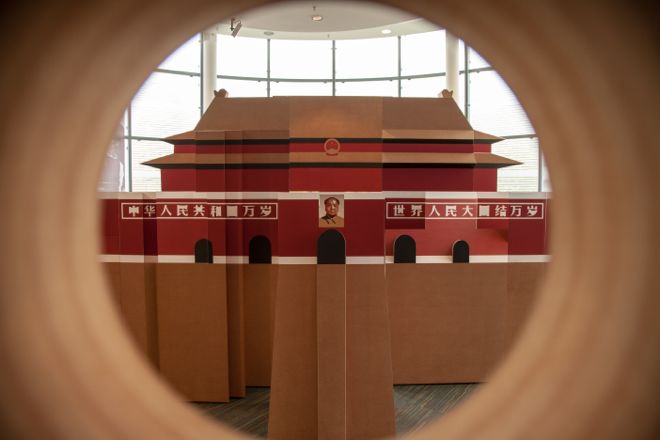
Yang Zhenzhong ‘Long Live the Great Union’ (2013) 2 – Tristan Poyser